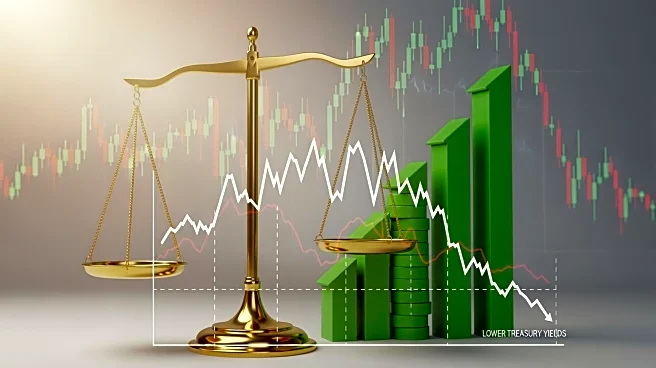What's Happening?
Despite a recent decline in gold prices, the metal remains one of the hottest trades of the year. Gold crossed the $4,000-per-ounce threshold earlier in October and reached a record above $4,300. It is
currently up more than 50% this year. The rise in gold prices is attributed to concerns around global trade, expectations of Federal Reserve rate cuts, and a drop in the U.S. dollar. The commodity has outperformed the broader stock market, including the Nasdaq-100 and S&P 500, which have also seen significant gains due to the AI investing boom. Investors are increasingly viewing gold as a scarce asset amid currency debasement concerns.
Why It's Important?
The sustained interest in gold highlights its role as a hedge against economic uncertainty and currency devaluation. The metal's performance, despite a strong stock market, underscores its appeal as a safe-haven asset. This trend is significant for investors seeking to diversify their portfolios and protect against potential market volatility. The ongoing geopolitical tensions and economic policies, such as tariffs, further contribute to the demand for gold as a stable investment.
What's Next?
Analysts suggest that gold may be due for a short-term correction after its substantial gains. However, the long-term outlook remains positive, with potential for further increases in response to global economic conditions. Investors are advised to be prepared for potential pullbacks and consider gold as part of a diversified investment strategy. The comparison with AI investments also suggests that while gold is a known factor, emerging technologies may offer additional growth opportunities.











